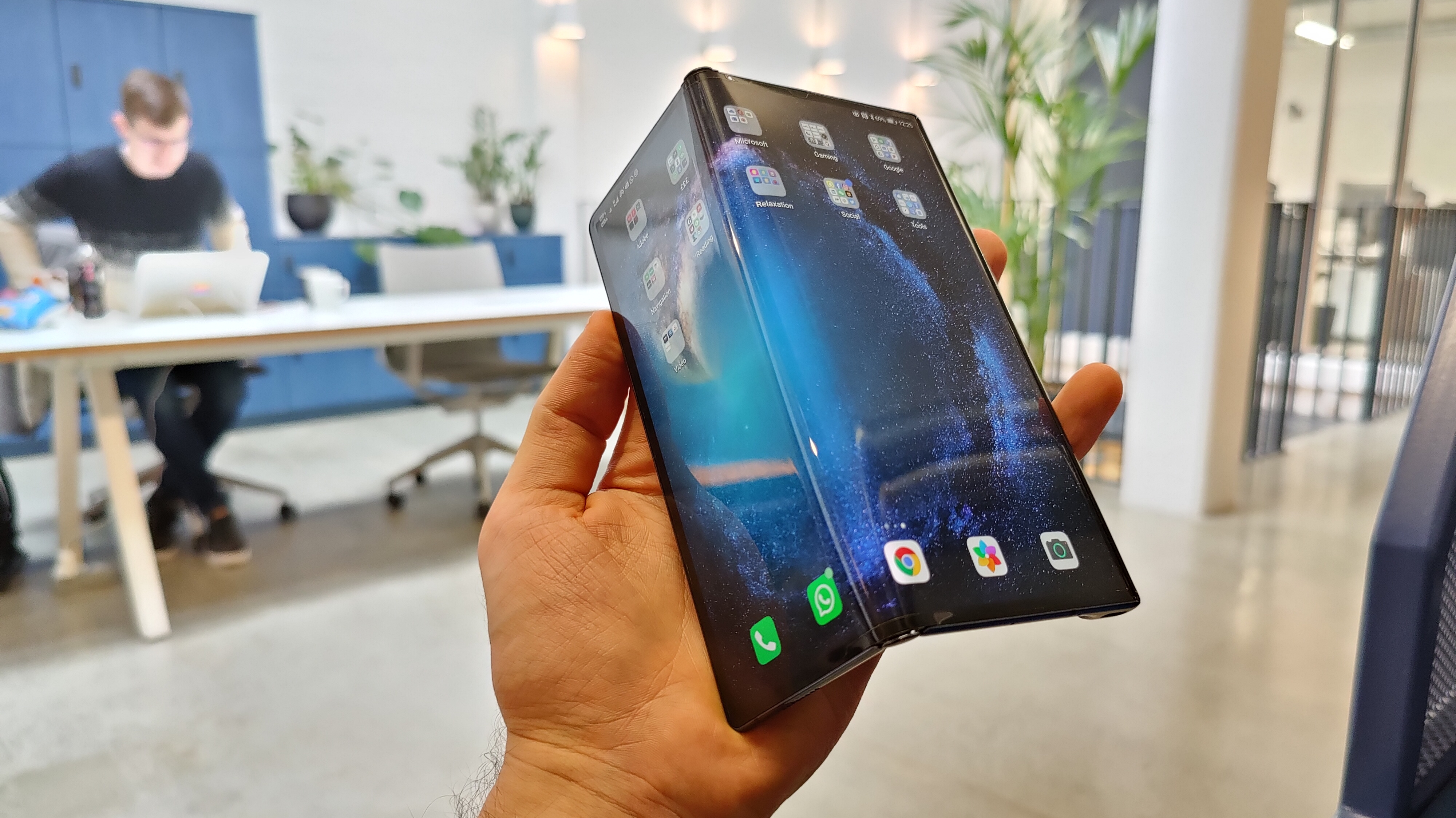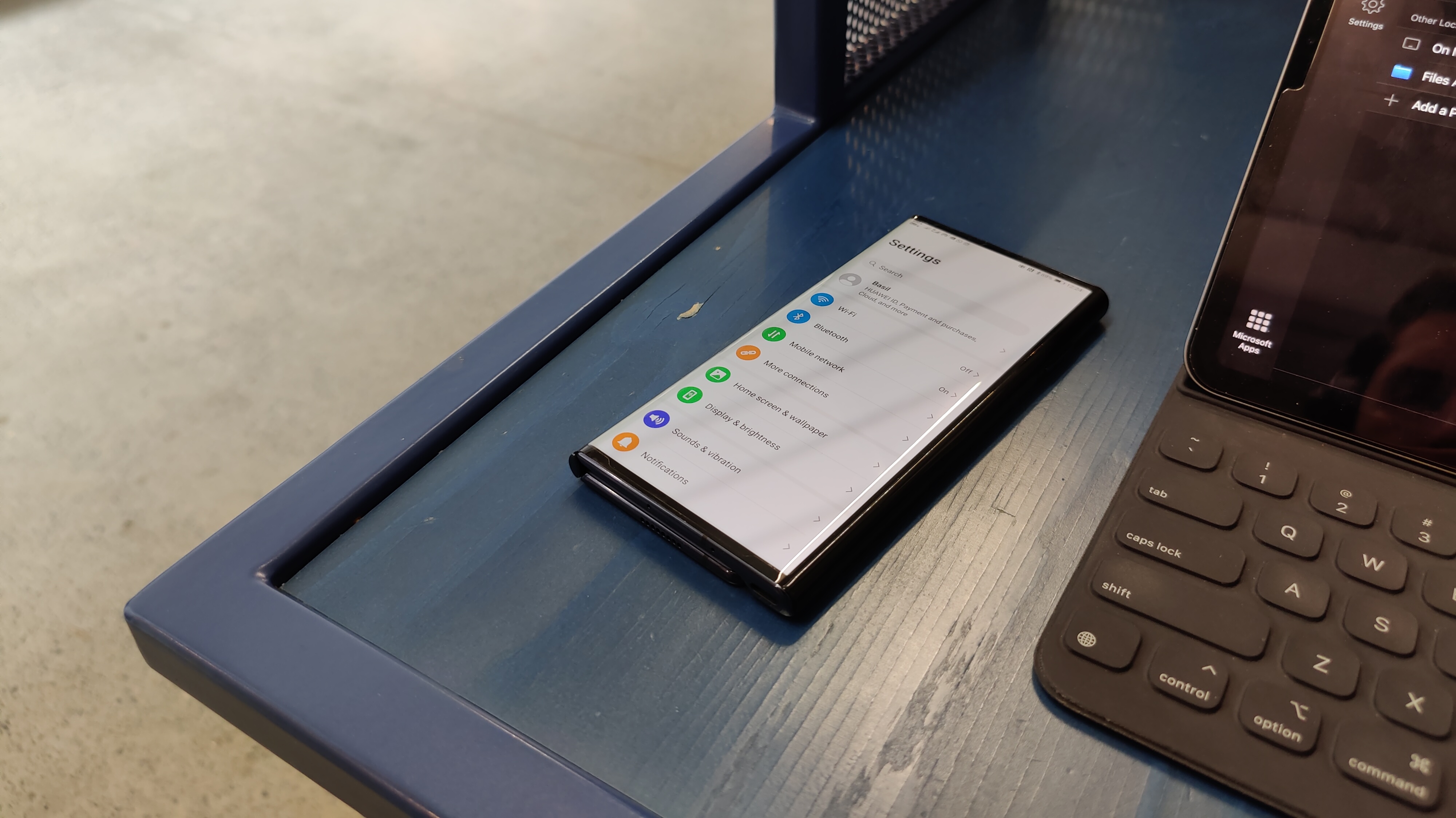10 days with the Huawei Mate XS: over a week with the latest foldable phone
Fantastic hardware meets restricted software

It's hard to summarize the Huawei Mate XS in just a star rating. It's a new product category; both a tablet and a phone - entirely usable in either mode with minimal compromise.
While we've seen other foldables like Samsung’s Galaxy Fold and Galaxy Z Flip, as well as the Motorola Razr, the Huawei Mate XS perhaps best brings the two product categories into one foldable hybrid. Its hardware is unmatched.
That said, for the foreseeable, we won’t be able to write about Huawei’s Android phones and tablets (and indeed foldables), without mentioning their software differences when compared to other Android phones.
Since Google cut ties with Huawei at the behest of the US government, the Chinese manufacturer's devices have been handicapped. While Huawei is doing the right things - investing massively in plugging the Google-shaped holes in its software story, and being mindful of how it sells and markets its new phones, it would be reckless to underplay the real-world implications of no Google services to those outside China.
It's difficult for a review to capture all the nuances of how incredible the Mate XS is as a hybrid device, or how far-reaching the lack of Google Mobile Services is to a western user. That’s why we've written this diary which documents a week with one of the most complex smartphone stories of our generation.

Day zero: I came from a Mate 30 Pro
Huawei tested the Google-free waters ahead of announcing the Mate XS with its Mate 30 Pro. Despite launching in 2019, it only hit select shelves in the west in 2020.
The Huawei Mate 30 Pro launched in the UK with limited availability because Huawei knew its Google-free status would be a challenge. Unsurprisingly, the theater surrounding its sale is an ongoing, carefully orchestrated production.
Get daily insight, inspiration and deals in your inbox
Sign up for breaking news, reviews, opinion, top tech deals, and more.
Sales staff are being briefed on how to sell a phone with no Google services and who to sell it to.
Huawei is also, no doubt, assessing how much a fantastic bit of hardware (which the Mate 30 Pro certainly is), is being held back by the software situation. It wants to sell phones, but it doesn’t want high return rates and resentful customers - that would kill the brand equity that it has worked so hard to build.
I already had some experience with that phone, so had some idea of what to expect. But this story isn’t about the Mate 30 Pro.
Hour one: setup
I opened the box on the train, handling it as if a relic that might turn to ash if the wind changed direction. All the buzz surrounding the Mate XS made mention of the plastic screen being ever-exposed, so the last thing I wanted to do was scuff it up before I fired it up.
Huawei has fortified the plastic on the front with, well, more plastic. A double layer and adhered together, with the screen coating costing more, pound for pound, than gold. I wanted to try being a little haphazard about how I used the Mate XS in my time with it - just not straight out of the gate.

In the box, the phone is flattened out, in its tablet mode, so that’s how I left it when I switched it on. As the Huawei logo flashed up, first impressions were positive - an impossibly thin tablet, that turns into a phone, a folding screen that doesn't feel naff - this is special.
The setup process was very similar to that of the Mate 30 Pro. Connect to Wi-Fi, log into a Huawei account, link it up with Huawei Phone Clone on an old device (at around 60Mbps no less), and bam - all my apps bar Google-related services and my Barclays banking app shifted across.
There was one striking difference, though - a message warning me not to peel the screen protector off, get the phone wet or fold it in temperatures below -5 degrees Celsius / 23 degrees Fahrenheit.
If the political situation didn't rule out half of North America, that last point would, as -5 isn't event that cold! This was doing nothing for my fear of using the Huawei Mate XS in the real world.
Still, the fear didn’t deter me; my week with Huawei’s new super phone had begun.
Hour two: fold, unfold, repeat
Before I dove into the software, first things first, I folded and unfolded it - a lot. The phone’s screen turns from a 6.6-inch tall smartphone to an 8-inch tablet. That might not sound like much of a difference, but it is.
It means you don't have to rotate your phone from portrait to landscape to beautifully showcase your pictures, you can open it and get a much better result, not to mention an "oooooh".
The unfolding mechanism is activated by hitting a latch on the back of the phone which unclasps the folded back side. It pops out a little, after which, you do the rest.
Initially, I didn’t love the clasp. If felt like yet another moving part in a device that already had more of those than most. The fact it enables the Huawei Mate XS to fold flat is a huge deal, though.
The Mate XS's 11mm thickness makes it thicker than most phones, but it’s still manageable, especially if you’re coming from an already large flagship like the OnePlus 7T Pro.

Day one: software
My first full day with the Huawei Mate XS after the novelty of its design subsided just a little, and I'd spent most of it setting it up. Huawei has invested $1 billion in its App Gallery, and in enticing developers to create for its non-Google devices.
That said, it’s clear that the associated improvements will be phased over the coming years, as the Huawei Mate XS’s app store experience is virtually identical to that of the Mate 30 Pro. That means you get a handful of the top ten apps available through it, but it isn’t comprehensive, yet.
Still, you can install apps manually, and there are other app stores; APK Pure and Aurora Store are the two I find most reliable and can recommend. 100% of the apps I needed were available in one or the other, except for games I’d bought through the Google Play Store, like Final Fantasy.

This was the first psychological hurdle I had to get to grips with - my Google Play investments were lost so long as I was living my best folding life.
Irrespective, I pressed on, setting up apps like Outlook to cover my Google Calendar, Drive, and Gmail needs. Some Google apps even worked without any headaches too - specifically Chrome and Maps, with the limitation being that I couldn't log into my Google account on them.
Most impressive, however, is the web browser experience. Whether through Chrome or Huawei’s default browser, viewing sites in desktop layout makes the Mate XS feel like something of an early days Chromebook.
I was able to upload files to Google Drive and even access my Gmail with a full web view. Hooked up to a mouse and keyboard, while it wasn’t a perfect experience, provided I had internet it was much better than it would have been if this was a traditional phone.
Day two: no sideloading Google
Having sideloaded Google Services onto the Mate 30 Pro, by day two with the XS, I was ready to give getting my old favorites onto the foldable a real stab. The method I used before was pretty straightforward; a few downloads, a couple of screen taps, mouse clicks, and a manual install of six APK files, and I was done. Not on the Mate XS though.
I tried twice to sideload Google Services, but no joy. Hmm. Time to get comfortable with finding workarounds to missing Google features.

The implications of no Google are far-reaching, extending beyond standard Google apps. Uber, for example, doesn't work on the Mate XS as it uses Google location-related APIs.
WhatsApp backups don’t work either as they are saved to Google Drive - the list of affected apps is extensive and random, so be prepared for a journey if you pick up a Mate 30 Pro or Huawei Mate XS.
Given the added novelty and utility a folding phone brings, however, in a masochistic way, this need to find app workarounds added to the sense of novelty that comes hand-in-hand with using the Mate XS. The ground-breaking hardware made it worth the extra effort, for me at least.
Basil Kronfli is the Head of content at Make Honey and freelance technology journalist. He is an experienced writer and producer and is skilled in video production, and runs the technology YouTube channel TechEdit.
